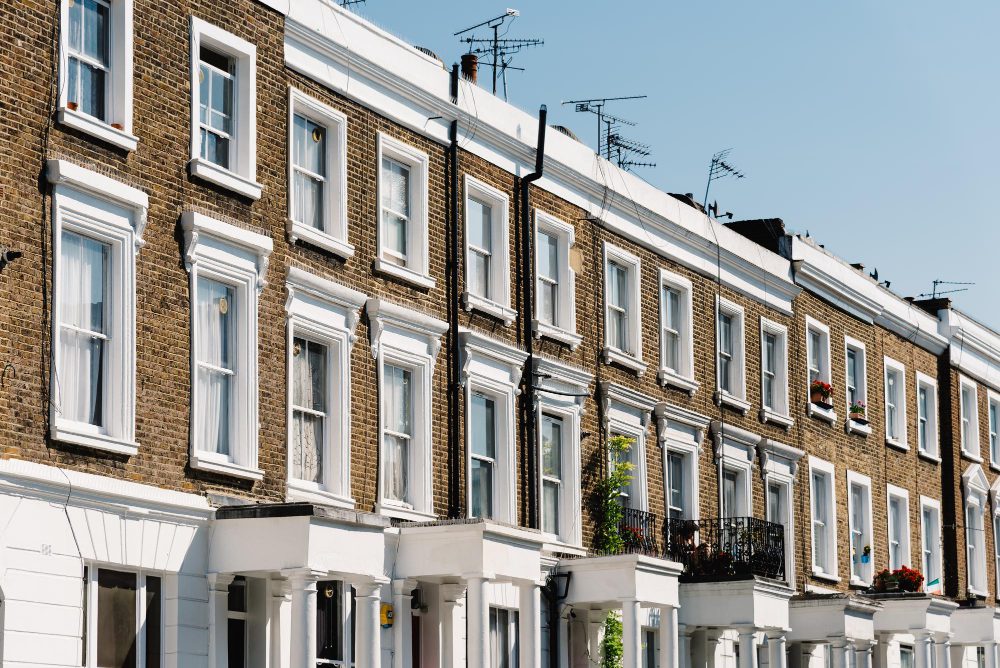What is the Best Double Glazing for Listed Buildings? A Comprehensive Guide by Gowercroft
Discover the best double glazing for listed buildings in this expert guide. Explore the unique requirements of heritage preservation, legal responsibilities, and the challenges of integrating modern features.
Listed buildings hold immense historical and cultural significance, representing our architectural heritage and the stories of the past. Preserving these remarkable structures is of paramount importance to maintain their authenticity and ensure they continue to inspire future generations. One crucial aspect of safeguarding listed buildings is the careful selection of appropriate double glazing solutions that balance modern functionality with preservation requirements.
In this authoritative post, we delve into the world of double glazing for listed buildings and explore the best options available. As a prominent authority in the field, Gowercroft brings unparalleled expertise and craftsmanship to the restoration and enhancement of heritage properties. Through their bespoke double glazing solutions, Gowercroft has garnered a reputation for seamlessly integrating modern technology while respecting the historical integrity of these buildings.
The purpose of this article is to provide valuable insights into the selection and benefits of double glazing for listed buildings. Whether you are a homeowner, architect, or preservation enthusiast, this comprehensive guide will equip you with the knowledge necessary to make informed decisions about the best double glazing options for your cherished heritage property. From understanding the significance of listed buildings to discovering Gowercroft’s expertise, join us on this journey as we unravel the world of double glazing for listed buildings.
Understanding Listed Buildings and Their Unique Requirements
Definition of Listed Buildings and the Different Categories (Grade I, II*, II) Based on Historical Importance
Listed buildings are architectural treasures that hold special significance due to their historical, architectural, and cultural value. They are officially recognized and protected by the government to ensure their preservation for future generations. The grading system categorizes listed buildings into three tiers:
1. Grade I: Buildings of exceptional national importance, representing outstanding architectural or historical significance.
2. Grade II*: Buildings of particular importance and more than special interest, warranting careful preservation.
3. Grade II: Buildings of special interest that are nationally important and deserving of preservation.
Understanding the grading system is crucial for property owners and conservationists as it helps assess the significance of the building and the level of protection it requires.
Find out more about Listed Buildings on the Historic England website.
Legal and Ethical Responsibilities of Owners Towards Preserving the Building’s Character
Owning a listed building comes with significant legal and ethical responsibilities to ensure its preservation and safeguard its unique character. Conservation and preservation are governed by specific regulations and laws, depending on the building’s grade and location.
Owners of listed buildings must adhere to the following responsibilities:
1. Obtaining Listed Building Consent: Any alterations, including double glazing installation, may require Listed Building Consent from the local planning authority. This ensures that changes maintain the building’s historical integrity.
2. Preserving Original Features: Owners must protect and preserve the building’s original features, including windows and glazing, which contribute to its historical significance.
3. Using Appropriate Materials: When upgrading double glazing, using materials sympathetic to the building’s period and architecture is essential to maintain authenticity.
4. Working with Conservation Officers: Collaboration with conservation officers is essential during any restoration or alteration project, as their expertise ensures the building’s character is preserved.
Challenges of Upgrading Listed Buildings with Modern Features Like Double Glazing
Upgrading listed buildings with modern features, such as double glazing, presents unique challenges due to the need to balance historical preservation with contemporary functionality. Some of the challenges include:
1. Planning and Consent: Securing Listed Building Consent for double glazing installations can be intricate, as any changes must align with the building’s character and heritage significance.
2. Aesthetics and Authenticity: Finding double glazing solutions that match the building’s original aesthetics while offering improved performance is essential for seamless integration.
3. Energy Efficiency vs. Preservation: Balancing energy efficiency goals with the preservation of historic windows can be complex, as the original windows may not meet modern energy standards.
The Need for Sensitive Restoration While Integrating Modern Technologies
Sensitive restoration is at the heart of preserving the authenticity of listed buildings. When integrating modern technologies like double glazing, it is crucial to approach the process with great care and expertise. Gowercroft, as a leading expert in heritage conservation, understands the delicate balance required between preserving historical features and incorporating modern comforts.
Their bespoke double glazing solutions embrace cutting-edge technology while respecting the original design and materials of listed buildings. By using craftsmanship and innovative techniques, Gowercroft ensures that double glazing installations seamlessly blend into the heritage property’s architecture, enhancing its performance without compromising its historical significance. This approach enables listed building owners to enjoy the benefits of modern double glazing while preserving the legacy of these remarkable structures for generations to come.
Selecting the Ideal Double Glazing for Listed Buildings
Historical Research
Before embarking on any double glazing upgrade, thorough historical research is paramount. Understanding the building’s original glazing style is essential to ensure authenticity. For instance, if the structure initially had single glazing, standard double glazing might not be approved by planning officers due to its wide cavity between panes, which creates an inauthentic double reflection effect not present in the original structure.
Conservation Officer Consultation
Involving conservation officers in the decision-making process is crucial. Their expertise ensures that the proposed double glazing solutions align with the building’s historical character and comply with preservation regulations. Failing to obtain appropriate planning permission can result in legal implications, including fines, prison and the expense of removing the alterations and restoring the building to it’s original form.
Material Considerations
When selecting double glazing materials, authenticity and performance must be balanced. Comparing options like timber, slimline aluminum, and uPVC is essential. Installing frames that match the original materials used in the building’s construction maintains its historical integrity, while also offering modern benefits.
Glazing Options
Exploring various glass types, thicknesses, and coatings suitable for listed buildings is critical. Options such as single glazing, slim double glazing, and vacuum glazing each have distinct advantages and disadvantages. Understanding their properties helps make an informed decision that optimizes energy efficiency, minimizes condensation, and preserves the building’s unique character.
Single Glazing
Single glazing refers to windows with a single pane of glass. It is the most traditional and historically accurate glazing option for listed buildings. Here are the advantages and disadvantages of single glazing:

Advantages:
1. Authenticity: Single glazing matches the original glazing style of many heritage buildings, preserving their historical character.
2. Aesthetics: It maintains the charm and elegance of traditional windows, enhancing the architectural beauty of the property.
3. Cost: Single glazing is generally more affordable than other glazing options.
Disadvantages:
1. Poor Insulation: Single glazing provides minimal insulation, leading to significant heat loss and drafts, which can impact energy efficiency and occupant comfort.
2. Condensation: Single glazing is prone to condensation, potentially causing dampness and damage to window frames.
3. Noise Penetration: It offers minimal sound insulation, making it less effective in reducing noise from the outside environment.
Slim Double Glazing:
Slim double glazing, also known as slimline double glazing or heritage double glazing, is designed specifically for listed buildings and period properties. It aims to provide improved energy efficiency without compromising the original sightlines and proportions of the windows. Here are the advantages and disadvantages:

Advantages:
1. Improved Insulation: Slim double glazing offers better insulation than single glazing, reducing heat loss and improving energy efficiency.
2. Enhanced Comfort: It minimises drafts and cold spots, enhancing occupant comfort throughout the building.
3. Preserves Sightlines: Slim double glazing maintains the slender sightlines typical of traditional windows, preserving the building’s original aesthetics.
Disadvantages:
1. Limited Insulation Compared to Modern Double Glazing: While an improvement over single glazing, slim double glazing may not match the thermal performance of standard modern double glazing.
2. Cost: Slim double glazing can be more expensive than single glazing, though it is often more cost-effective than vacuum glazing.
3. Unreliable: Slim double glazing, despite its advantages, can be prone to failure due to the thinner cavity and weaker seals compared to standard double glazing. This issue has raised concerns to the extent that some manufacturers offering these units have faced repercussions, such as having their membership of the prestigious British Glass and Glazing Federation (GGF) rescinded. The GGF has actively pursued suppliers offering slim double glazing with reduced sightlines through trading standards and has taken firm action against such practices. As a result, the reliability of certain slim double glazing units may be questionable, making it essential for property owners to exercise caution when considering this option for listed buildings. It is advisable to seek advice from reputable experts like Gowercroft, who can offer proven and reliable slim double glazing solutions tailored to individual heritage properties.
Vacuum Glazing:
Vacuum glazing, also known as evacuated glazing, is a state-of-the-art glazing solution that provides exceptional thermal performance. It consists of two glass panes separated by a vacuum-sealed cavity. Here are the advantages and disadvantages:

Advantages:
1. Superior Thermal Insulation: Vacuum glazing provides outstanding thermal efficiency, significantly reducing heat loss and energy consumption.
2. Reduced Condensation: The vacuum-sealed cavity minimizes the occurrence of condensation, ensuring better window longevity.
3. Thin Profile: Vacuum glazing can be produced with slim sightlines, making it suitable for preserving the aesthetics of heritage buildings.
4. Robust and Reliable: Vacuum glazing units are known for their exceptional durability and reliability. The vacuum-sealed cavity eliminates the risk of gas leakage, ensuring that the glazing maintains its high thermal performance over an extended service life. The absence of air between the panes reduces the risk of condensation and potential damage to the glass, resulting in a longer-lasting and more dependable glazing solution for listed buildings. Property owners can have peace of mind knowing that vacuum glazing will continue to perform efficiently for many years, making it a worthy long-term investment.
Disadvantages:
1. Cost: Vacuum glazing is currently one of the most expensive glazing options on the market due to its advanced technology and manufacturing process.
When considering vacuum glazing for listed buildings, it’s essential to weigh the advantages of superior thermal insulation and reduced condensation against the higher upfront cost. Consulting with reputable glazing experts like Gowercroft can provide valuable insights to help make an informed decision that aligns with the specific needs and preservation goals of the heritage property.
Each glazing option has its unique benefits and considerations, and the best choice depends on factors such as budget, historical accuracy, energy efficiency goals, and local regulations. Consulting with experts like Gowercroft can help listed building owners make informed decisions that strike the perfect balance between preservation and modernisation.
Gowercroft’s Expertise in Bespoke Double Glazing for Listed Buildings
Gowercroft – Trusted Company with Extensive Experience in Heritage Glazing
With an unwavering commitment to preserving the legacy of listed buildings, Gowercroft has earned a reputation as a trusted authority in heritage double glazing solutions. With years of experience in heritage glazing, Gowercroft’s team of experts understands the delicate balance between historical preservation and modern comfort. Their passion for architectural heritage and dedication to craftsmanship sets them apart as a leading provider of tailored double glazing solutions for cherished heritage properties.
Successful Projects in Listed Buildings
Gowercroft’s impressive portfolio speaks volumes about their expertise in heritage glazing. Among their remarkable projects is the award-winning restoration of Templeton House, a Grade II* listed building. Their skillful touch also shines through the ‘deep sustainability’ renovation of Mews House, where they seamlessly integrated modern double glazing while preserving the property’s historical character. Additionally, Gowercroft’s historically significant restoration of the William White buildings exemplifies their ability to breathe new life into treasured architectural gems while respecting their heritage.
Gowercroft’s Expertise in Crafting Heritage-Approved Double Glazing Solutions
Gowercroft’s expertise lies in developing double glazing solutions specifically tailored to integrate seamlessly into listed buildings, receiving approvals from planning authorities with utmost success. Their dedication to the preservation of historical charm is evident in every meticulously crafted product. With a meticulous eye for detail, Gowercroft’s team diligently recreates authentic period features, ensuring that each double glazing unit aligns perfectly with the original aesthetics of heritage windows. Beyond mere bespoke solutions, Gowercroft’s products are tried, tested, and trusted, harmoniously blending modern technology with timeless elegance. Their proven track record of securing planning authorities’ approval highlights their commitment to delivering heritage-approved double glazing solutions that respect the architectural legacy of cherished listed buildings.
Certifications and Awards Received for Heritage Conservation Work
Gowercroft’s dedication to excellence has earned them several prestigious awards and certifications for their heritage conservation work.
Recognitions include:
- BWF Heritage Product of the Year 2022
- BuildIt Award for Best Product 2017
- BWF Woodworking Project of the Year 2019
Moreover, their outstanding contributions to the industry have led to nominations for G18 and numerous business awards. These accolades attest to Gowercroft’s commitment to delivering top-quality heritage products and services, cementing their position as a leading expert and providers of the best double glazing for listed buildings.
Case Studies
Conclusion: Can You Install Double Glazing in a Listed Building?
What is the Best Double Glazing for Listed Buildings?
Heritage double glazing stands out as the ideal solution for listed buildings due to its exceptional qualities tailored for historical properties. By combining modern technology with a sensitivity to preserve heritage aesthetics, heritage double glazing offers the perfect blend of authenticity and performance. Its slimline profiles and vacuum glazing ensure energy efficiency without compromising the building’s original character. Choose heritage double glazing to safeguard the charm of your listed property while enjoying the benefits of advanced glazing technology.
Throughout this article, we have explored the crucial considerations when selecting double glazing for listed buildings, a task that demands a delicate balance between historical preservation and modern comfort. Understanding the significance of listed buildings and their unique requirements is essential, as is the need for sensitive restoration while integrating cutting-edge technology. We have delved into the advantages and disadvantages of various glazing options, from single glazing to slim double glazing and vacuum glazing, each offering distinct benefits and challenges.
Choosing the best double glazing for listed buildings is not only about enhancing energy efficiency and comfort but also about honouring the architectural legacy of these cherished properties. Achieving planning permission and securing approvals from conservation authorities are vital steps in this journey. As demonstrated by Gowercroft’s expertise in crafting bespoke double glazing solutions, striking the perfect balance between historical accuracy and modern performance is possible.
When considering double glazing for your listed building, we encourage you to seek professional advice from reputable experts like Gowercroft Joinery. With extensive experience in heritage glazing and a proven track record in successful restoration projects, Gowercroft can provide tailored solutions that meet the unique needs of your heritage property. Preserving the charm and character of your listed building while enhancing energy efficiency and comfort is not only achievable but essential for its continued preservation.
Take the next step in preserving your property’s heritage by consulting Gowercroft for your bespoke double glazing needs. Our team of experts is ready to guide you through the process, ensuring that your listed building benefits from the most suitable and approved double glazing solutions available. Embrace the future while preserving the past—contact Gowercroft today for a consultation and embark on a journey of lasting heritage conservation and modern comfort.
Explore the Gowercroft range of Heritage Windows and Doors here.

